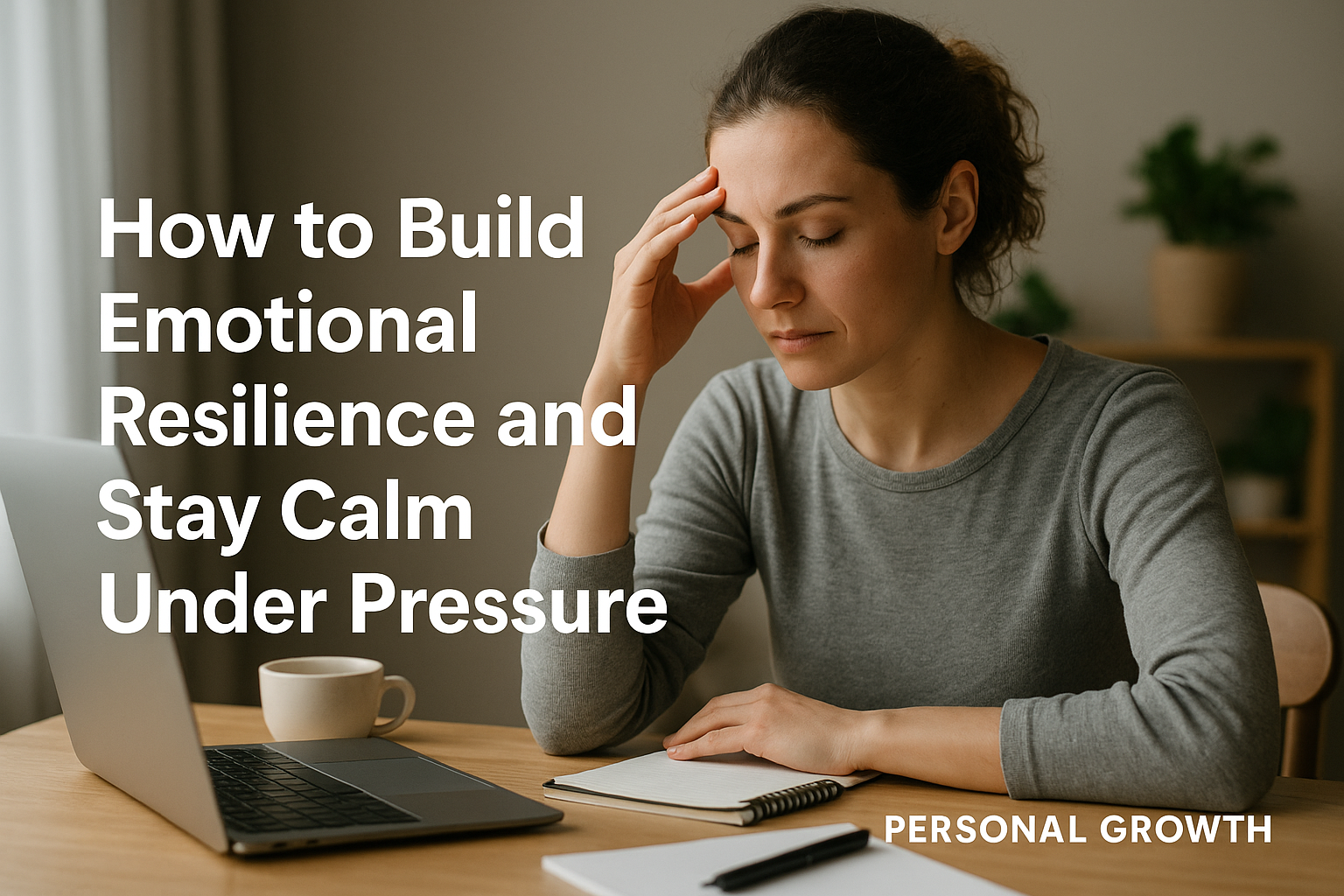Life is full of pressure—deadlines, conflicts, uncertainty, and setbacks. While you can’t always control what happens, you can control how you respond. That’s where emotional resilience comes in.
Resilience isn’t about suppressing your feelings. It’s about managing them with awareness and responding to challenges with strength, clarity, and flexibility.
In this article, you’ll learn how to build emotional resilience and stay grounded—even when life gets intense.
What Is Emotional Resilience?
Emotional resilience is your ability to:
- Recover from stress, disappointment, or failure
- Adapt to change and uncertainty
- Stay focused under pressure
- Respond—not react—to emotional triggers
It’s not about avoiding emotion. It’s about managing it in healthy, productive ways.
1. Name What You’re Feeling
The first step to managing emotions is recognizing them.
Instead of saying, “I’m overwhelmed,” try:
- “I feel anxious because I’m behind on a deadline.”
- “I feel disappointed because my effort wasn’t acknowledged.”
Naming the emotion activates the prefrontal cortex (your rational brain) and reduces the intensity of the reaction.
Try the phrase:
“I’m noticing I’m feeling ___. That’s valid.”
2. Use the Pause-Breathe-Respond Method
When you’re triggered, take a pause before reacting.
Step 1: Pause
Give yourself 5–10 seconds to create space.
Step 2: Breathe
Take 3 slow, deep breaths. This calms your nervous system.
Step 3: Respond
Now choose your response with intention—not emotion.
This simple method keeps you from saying or doing things you’ll regret.
3. Practice Self-Compassion (Not Self-Criticism)
Resilient people are not harsh with themselves. They talk to themselves like a wise, supportive friend.
Try phrases like:
- “It’s okay to feel this way.”
- “I’m doing the best I can with what I know.”
- “This doesn’t define me—it’s just a moment.”
Self-kindness builds strength—not weakness.
4. Reframe Setbacks as Feedback
Emotionally resilient people don’t see failure as permanent or personal.
Instead of:
❌ “I messed everything up.”
Try:
✅ “What can I learn from this?”
This mindset keeps you flexible and focused on growth—even in hard moments.
5. Build a Toolbox of Coping Tools
When emotions run high, you need a set of healthy outlets.
Examples:
- Journaling to process thoughts
- Walking or physical movement
- Talking to a friend
- Doing something creative or calming (music, art, nature)
- Mindfulness or grounding exercises
Keep your toolbox visible and accessible.
6. Strengthen Your “Stress Recovery” Muscles
Resilience isn’t just about bouncing back—it’s about bouncing forward.
Habits that help:
- Sleep 7–9 hours regularly
- Eat nourishing meals
- Limit caffeine and social media during stress
- Practice daily gratitude
- Set boundaries with people or tasks that drain you
Recovery is part of resilience.
7. Keep Perspective With a Long-Term Lens
When you’re in a high-pressure moment, zoom out.
Ask:
- Will this matter a month from now? A year?
- What’s one small thing I can do right now?
- What has this challenge taught me about myself?
Perspective reduces panic and builds confidence.
Final Thought: Resilience Is a Skill You Can Build
You don’t need to be born strong—you can become strong.
Every time you pause instead of react…
Every time you speak kindly to yourself…
Every time you bounce back, even if shakily…
You’re building resilience.
You’re learning to carry pressure without crumbling—and that’s powerful.

